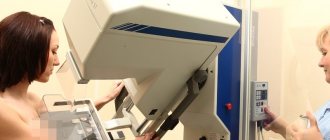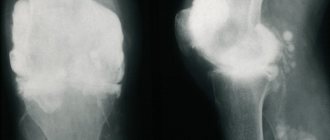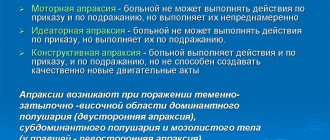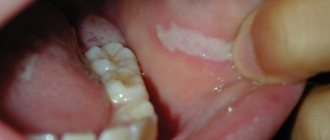Aphasia is a disorder characterized by disruption of previously normal speech. Aphasia can manifest itself to a greater or lesser extent. The person ceases to understand what is said to him and cannot speak himself. The manifestations of this disorder may vary in each case.
- Causes
- Classification of aphasia
- Manifestations of the disorder
- Diagnostics
- Aphasia correction
- Communication Guide
- Prognosis and prevention
Speech symptoms of aphasia:
- paraphasia
- speech emboli
- contamination
- perseveration
- acalculia
- agraphia
- alexia
- logorrhea, etc.
If this disorder is suspected, an examination of function, mental processes and neurological status is necessary. Aphasia is mainly a secondary disorder. That is, it is caused by a certain pathology, the elimination of which also relieves speech symptoms. Training is also necessary to restore speech skills after getting rid of the primary pathology.
Aphasia occurs due to organic damage to the areas of the human brain that are responsible for speech. There is a separate disorder called alalia. Aphasia differs from it in that a person’s speech is initially normal, he can understand phrases addressed to him and normally pronounces what he wants himself. And with alalia, a person cannot form normal speech skills from the very beginning.
Speech impairment in patients with aphasia is characterized as systemic. They are impaired:
- impressive (including understanding and perception),
- expressive (which includes grammar rules, vocabulary, pronunciation of sounds),
- written,
- inner speech.
Also with aphasia the following are affected:
- mental processes
- personality
- motor functions
- sensory sphere
For the reasons described above, aphasia is a complex disorder. It is studied by medical psychologists, speech therapists and neurologists.
What is aphasia?
The Latin term aphasia in medical terminology refers to a neurological disease associated with a disorder of part of the cognitive functions of the human body. The cognitive functions of the human brain include: speech, memory, drawing and writing, understanding or awareness, orientation in space and time, as well as attention and praxis. In aphasia, functions such as speech, writing, and the perception of auditory and, in some cases, visual information are significantly affected.
Aphasia and Alexia
Aphasia should not be confused with alexia. These are two completely different terms. Alexia occurs as a congenital defect of the child’s speech apparatus, thus the child initially does not develop speech and its perception is significantly difficult. In contrast to alexia, with aphasia the victim’s speech was already formed. Thus, aphasia is always an acquired disease, while alexia is a primary lesion of the speech centers.
Aphasia occurs as a result of organic damage to the neurons of the speech center located in the cerebral cortex. Speech disorder leads to the formation of persistent social and psychological maladjustment of the victim, since contact with the outside world is greatly hampered. Aphasia is manifested by such symptoms as: severe impairment of speech function, impoverishment of vocabulary, primarily in the native language. The victim can no longer consciously construct sentences, as well as perceive someone else's oral or written speech.
Our specialists
Tarasova Svetlana Vitalievna
Expert No. 1 in the treatment of headaches and migraines. Head of the Center for the Treatment of Pain and Multiple Sclerosis.
Somnologist.
Epileptologist. Botulinum therapist. The doctor is a neurologist of the highest category. Physiotherapist. Doctor of Medical Sciences.
Experience: 23 years.Derevianko Leonid Sergeevich
Head of the Center for Diagnostics and Treatment of Sleep Disorders.
The doctor is a neurologist of the highest category. Vertebrologist. Somnologist. Epileptologist. Botulinum therapist. Physiotherapist. Experience: 23 years.
Bezgina Elena Vladimirovna
The doctor is a neurologist of the highest category. Botulinum therapist. Physiotherapist. Experience: 24 years.
Dyachenko Ksenia Vasilievna
Head of the center for the treatment of dizziness and balance disorders.
The doctor is a neurologist of the highest category.
Angioneurologist. Neurorehabilitation specialist. Physiotherapist. Candidate of Medical Sciences.
Experience: 19 years.Drozdova Lyubov Vladimirovna
The doctor is a neurologist. Vertebroneurologist. Ozone therapist. Physiotherapist. Experience: 17 years.
Zhuravleva Nadezhda Vladimirovna
Head of the center for diagnosis and treatment of myasthenia gravis.
The doctor is a neurologist of the highest category. Physiotherapist. Experience: 16 years.
Palagin Maxim Anatolievich
The doctor is a neurologist. Somnologist. Epileptologist. Botulinum therapist. Physiotherapist. Experience: 6 years.
How does the human speech apparatus function?
The communicative characteristics of people are directly related to the formation of the second signaling system or speech apparatus. All human achievements are primarily associated with the progressive development of communication abilities, which allowed people to actively exchange accumulated information and interact together.
It is important to note that the human brain synthesizes and perceives speech thanks to developed speech centers. Both speech centers are located in the cerebral cortex and are named after the researchers who discovered them.
- Broca's speech area is a speech-motor or simply motor center responsible for the formation of human oral speech. This center is responsible for motor function: the phonological and syntactic structure of speech coming from a person. The motor center is a kind of verbal analyzer and is responsible for the work of the facial muscles and tongue.
- Wernicke's speech center is a center responsible for the analysis and perception of incoming speech information from the outside. Wernicke's area has an anatomical localization in the temporal gyrus and is usually located in one dominant hemisphere. In addition to processing incoming speech information, the Wernicke Center also provides intonation characteristics of outgoing speech.
Despite the anatomical separation of the two speech zones listed above, they constantly interact with each other and work harmoniously as a single whole. Perception and analysis of incoming information, further interpretation of the received data and the formation of a response are the most important functions that formed the second reflex signaling system of a person.
Etiological factors of aphasia
The cause of the development of such a cognitive disorder as aphasia can be a variety of factors, both external and internal to a person’s environment. However, most often internal factors lead to the development of aphasia. The most common etiological factors in the development of aphasia include:
- Traumatic brain injury. One of the most common external factors. Aphasia can occur during a traffic accident or during a fight, when the victim's brain tissue experiences significant kinetic energy. A concussion of the brain can lead to bruise of its tissues as a result of a hydrodynamic shock or to the development of rupture of cerebral vessels or vessels of the arachnoid membrane.
- Acute cerebrovascular accident or stroke. The most common cause of aphasia. In most cases, stroke occurs as a result of damage to the cardiovascular system, which leads to ischemic damage to the brain. If the thrombus is localized at the level of the middle cerebral artery, then the speech center is damaged and motor aphasia develops. Predisposing components of vascular diseases also include: hypertension, dyslepidemic blood disorders, atherosclerosis and metabolic disorders.
- Oncological diseases. In the structure of the causes of aphasia, they are also often found. Aphasia in this case occurs when the speech center is damaged by a tumor or when the latter is compressed by a benign tumor.
- Infectious and inflammatory diseases. This etiological cause is most often found in children and young people, since they are more susceptible to generalized infectious processes. Meningitis and encephalitis can lead to aphasia.
In more rare cases, the cause is chronic degenerative diseases of the nervous system such as Alzheimer's and Pick's disease, which can also affect the speech areas of the cerebral hemispheres.
Forms of the disease
According to different classifications, there are from 9 to 11 forms of aphasia (detailed characteristics of the various forms of aphasia are presented in the table below), the main ones are:
- A motor form in which pronunciation is completely or partially lost.
- Sensory form, resulting in difficulty understanding words and phrases. Speech in sensory aphasia is perceived as a meaningless set of sounds.
- A total form that combines the two previous ones. The patient is unable to reproduce or understand speech.
Each of these forms should be distinguished from other speech disorders: problems caused by poor hearing, dysarthria, dyslalia, which are not caused by organic lesions of the brain structures.
Classification of types of aphasia
In clinical neurological practice, it is customary to distinguish the following types of aphasia:
- Dynamic, occurs with organic damage to the posterior areas of the frontal lobes. It manifests itself as a violation of the utterance program, which leads to both a violation of speech perception and a violation of its formation.
- Acoustic-gnostic, manifested by damage to Wernicke's analytical area. Characterized by loss of phonemic hearing. A person with this form ceases to adequately perceive the interlocutor’s speech;
- Acoustic-mnestic, manifestation is a violation of the visual representation of an object and loss of auditory memory. Such aphasia is manifested by impoverishment of speech, omission of parts of speech and the presence of paraphrased speech errors;
- Amnestic-semantic, with damage to the posterior temporal parts of the brain. Understanding of complex grammatical structures is impaired, simple speech is not affected;
- Efferent motor aphasia manifests itself when Broca’s area is damaged, and the patient develops articulatory speech defects or apraxia;
- Afferent motor aphasia develops with damage to the postcentral sulcus. The main disorder in this form is a kinetic speech disorder or severe difficulty in speech function associated with the formation of specific sounds. The patient also has a disturbance in the perception of speech information when reading and writing.
Treatment options
A combination of medicinal and surgical treatment methods allows you to cope with the pathology:
- surgical removal of the tumor site, tissue with consequences of hemorrhage or purulent contents;
- antibacterial therapy;
- taking anticonvulsants to prevent epileptic seizures;
- taking medications to normalize blood pressure, cerebral blood flow and metabolism.
A mandatory part of therapy is sessions with a speech therapist to correct speech disorders.
Clinical picture
Aphasia is characterized by a variety of disorders that manifest themselves more or less actively depending on the clinical form of aphasia. The most common manifestations of aphasia are the following symptoms:
- The patient misses phrases and individual words, most often nouns;
- Repetition of the same phrases or phrases;
- Slow speech of the victim, with pronounced intervals between sentences, or vice versa, the victim’s speech becomes fluent, illogical, turning into “porridge”;
- The presence of paraphrases is a descriptive characteristic of the semantic load of a word. Speech becomes descriptive;
- A person suffering from aphasia cannot remember the name of the object or object in question, but knows its function and appearance.
- The victim's speech becomes expressive and contains a large number of verbs.
It is important to note that the patient most often easily remembers the name of an object when prompted or in context, for example, if you name the first syllable of the desired word, the patient will easily remember its ending.
Communication Guide
You can and should communicate with people with aphasia. Patients retain some communicative abilities that need to be activated through communication, without allowing them to “fade away.” Those who suffer from a severe form of aphasia retain the ability to understand the meaning of what is said (although not every word individually). Often the patient may not understand what is being said to him because he does not remember the meaning of individual words or forgets the beginning of a phrase.
How to communicate with people with aphasia:
- sit down and catch the person's eye
- if you are afraid of communication, you should start with simple topics, for example, tell how your day was in the simplest terms, then you need to ask a simple question
- It’s better to speak at a slow pace, focusing your voice on key words in the text
- You can do the following practice: write down the key words of the future conversation on paper, then repeat what was said and show the paper to the patient. This will be his cue for conversation.
- use not only the spoken word to communicate, but also writing, drawings, gestures, and pointing at objects. Forgive a person to do the same, let him use a dictionary if it will be easier to communicate
- if the patient is trying to convey some idea to you, determine who he is talking about, what exactly happened and in what place
- it is important to be able to ask leading questions
- do not ask questions that require monosyllabic answers
- be patient, because communication with a person with aphasia is far from easy, but it is necessary
Differential diagnosis
Despite the fact that aphasia is a neurological disease, the approach to diagnosis is multidisciplinary. To accurately determine the clinical and morphological manifestations of the disease, it is necessary to fully conduct a diagnostic examination of the patient.
On the basis of the Clinical Institute of the Brain there is a powerful diagnostic department, which has all the necessary equipment and specialists in related fields, which ensures a high degree of information content of the diagnostic data provided.
Topical diagnosis plays the most important role in patient examination. This procedure is performed by a neurologist or neurosurgeon. To do this, all data from the history of the present disease are collected, special symptoms are determined, as well as a physical examination of the patient. Along with an examination by a neurologist, the victim should be examined by a psychotherapist to exclude or confirm mental disorders and establish the degree of social adaptation of the patient with aphasia. The degree of reliability of the data obtained largely depends on the qualifications of the specialist and his practical experience.
To diagnose aphasia, studies such as:
- Computed and magnetic resonance imaging. Both studies can be performed without contrast and with contrast. For visualization of soft tissues, it is more informative to conduct an MRI study.
- Plain radiography of the head and neck. X-rays are performed if there is a history of traumatic brain injury to confirm or exclude defects in hard tissues (cranium).
- Ultrasound examination – sonography and ultrasound color Doppler mapping of cervical (cervical) vessels. This ultrasound examination is performed to exclude damage to the vessels of the neck.
In addition to instrumental studies, an important component of a diagnostic examination is a set of laboratory tests. It is necessary to determine the patient’s blood type and Rh status, determine the lipid profile and general blood test.
Advantages of visiting the Yusupov Hospital
Treatment of aphasia of various forms in Moscow is carried out by experienced specialists from the neurological department of the Yusupov Hospital. By trusting us with your health, you can be sure of receiving qualified medical care. Each patient is guaranteed an individual approach. In their work, doctors use proven modern techniques, which ensures a positive result of therapy.
Despite the high quality of services provided, prices are affordable (more details on the price list can be found on the website). In addition to neurology, services are available in other areas, including oncology, surgery, and therapy. For convenience, payment for treatment can be made in cash or by bank transfer. To make an appointment with a specialist, just call the numbers provided or fill out an application online, leaving your contact information.
Therapeutic measures
In the treatment of aphasia, as with any other neurological pathology, the leading role is played by the possibility of using pathogenetically based therapy. Only after a fully completed diagnostic examination can targeted therapy be prescribed.
The first step, regardless of the form of aphasia, is to eliminate life-threatening factors. Intensive therapy measures are carried out, the patient is stabilized, and only after this the stage of aphasia treatment and subsequent rehabilitation begins.
In the treatment of aphasia, it is important to activate the metabolic imbalance that has arisen in the brain as quickly as possible. The following groups of drugs are used for this:
- Cerebroprotectors and nootropics: Piracetam, Nootropil, Cerebrolysin.
- Vascular drugs: Octavegin, Vinpocetine and analogues.
- B vitamins, natural antioxidants and neuroprotectors.
- Anticoagulants or coagulants, depending on the form of vascular lesion.
A very important point is the conduct of physiotherapeutic procedures. Therapeutic electrophoresis, magnetic therapy, acupuncture, therapeutic massage and physical exercise are used. All methods make it possible to increase the effectiveness of basic therapy and accelerate regenerative and reparative processes.
Dialogical work
Our main work in the correction of aphasia is dialogic speech.
Scheme of work in this direction:
- the patient repeats the prepared answer phrase;
- the speech therapist prompts the first one or two syllables, and the patient must complete the word or phrase;
- the patient must select one or more words from those spoken by the speech therapist;
- the patient must answer the speech therapist’s question without prompting.
Remember, aphasia is treatable. If in adults the recovery process is difficult and takes a lot of time, then in children aphasia is treated quite quickly and effectively. The use of effective techniques, songs, and negotiation exercises significantly accelerates the patient’s process of developing coherent speech.
Our speech pathologists and speech pathologists conduct speech therapy classes in Almaty for the correction of aphasia in both adults and children. If you need help or advice, please contact us!








